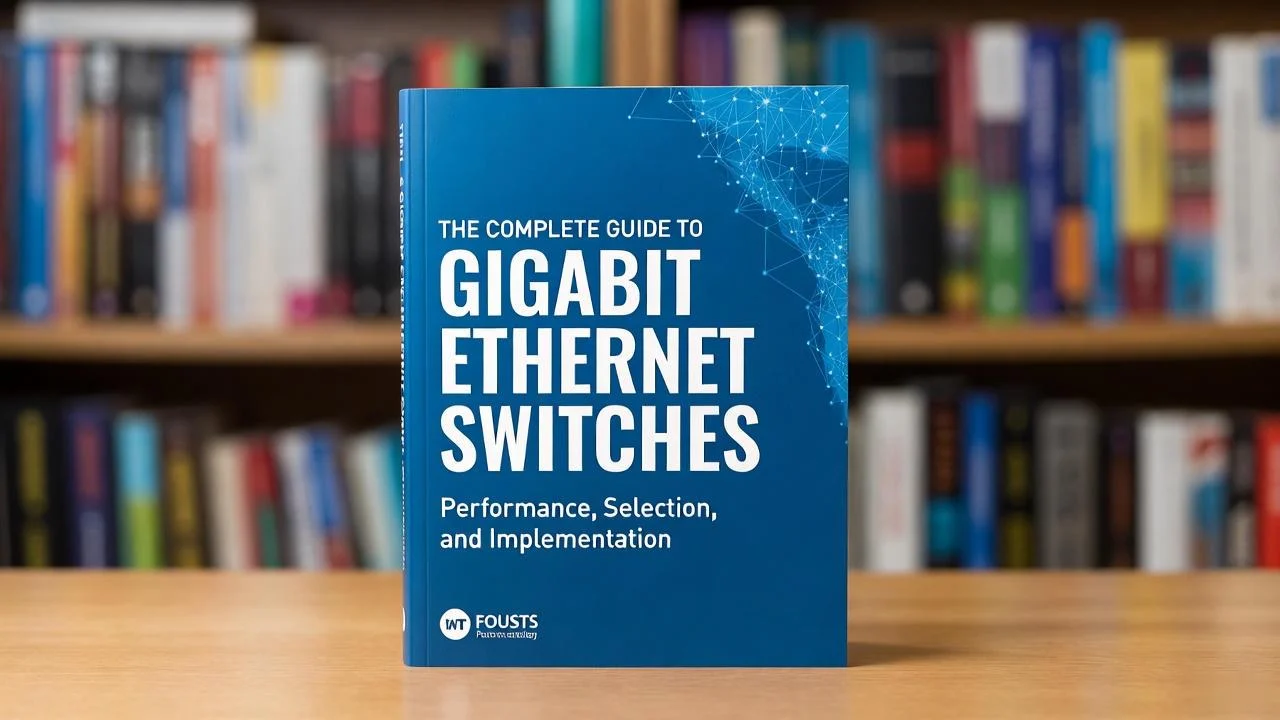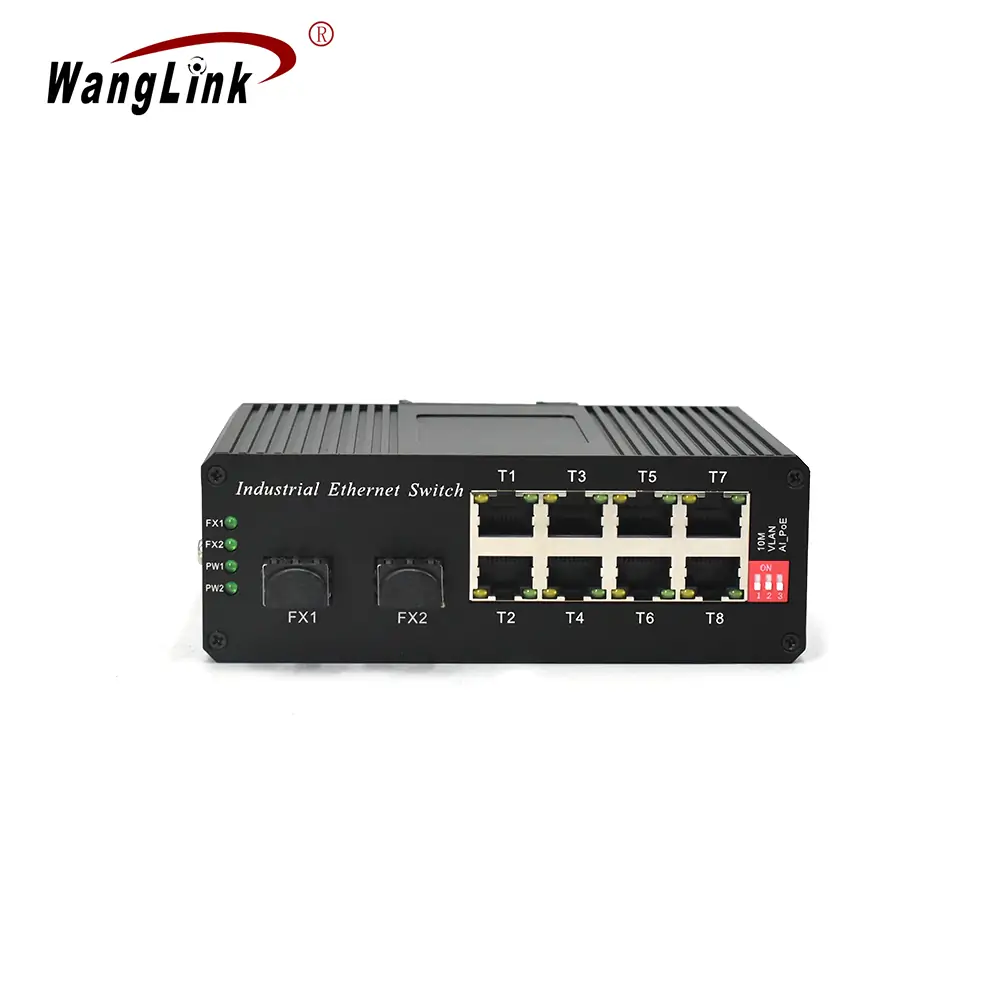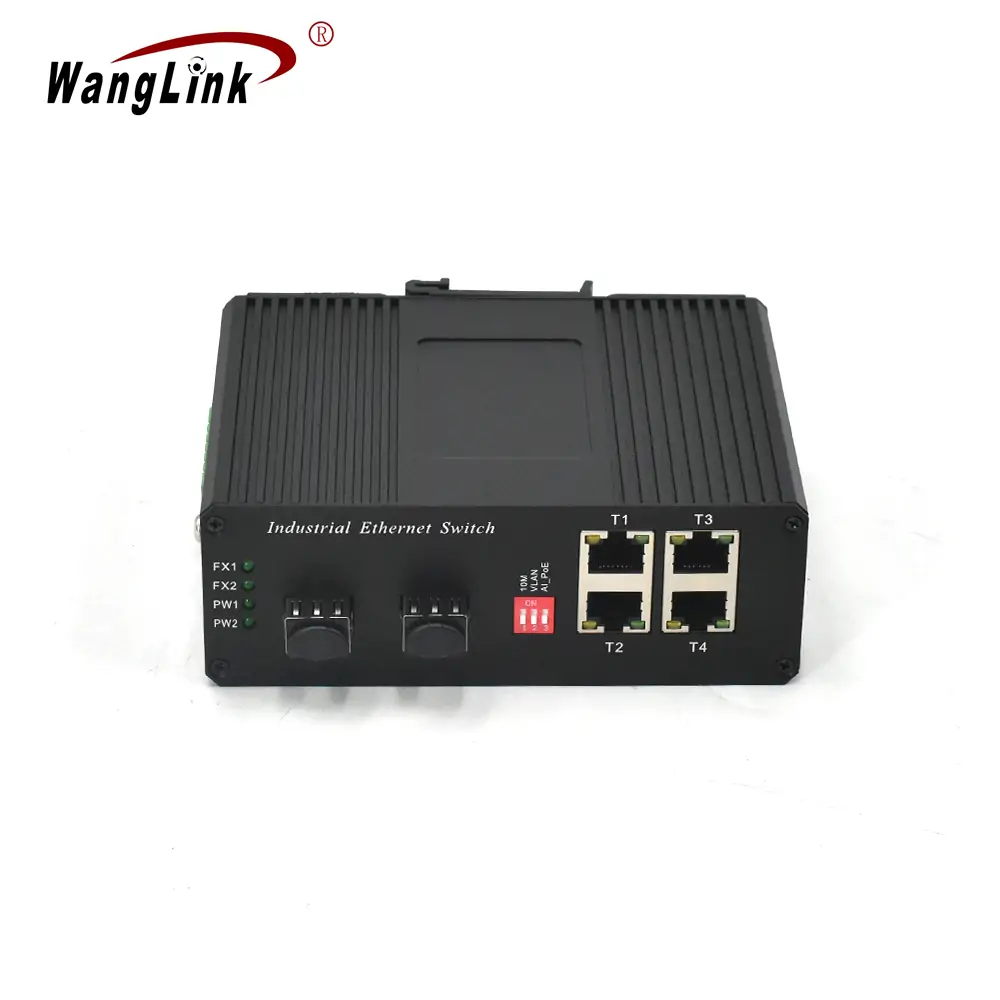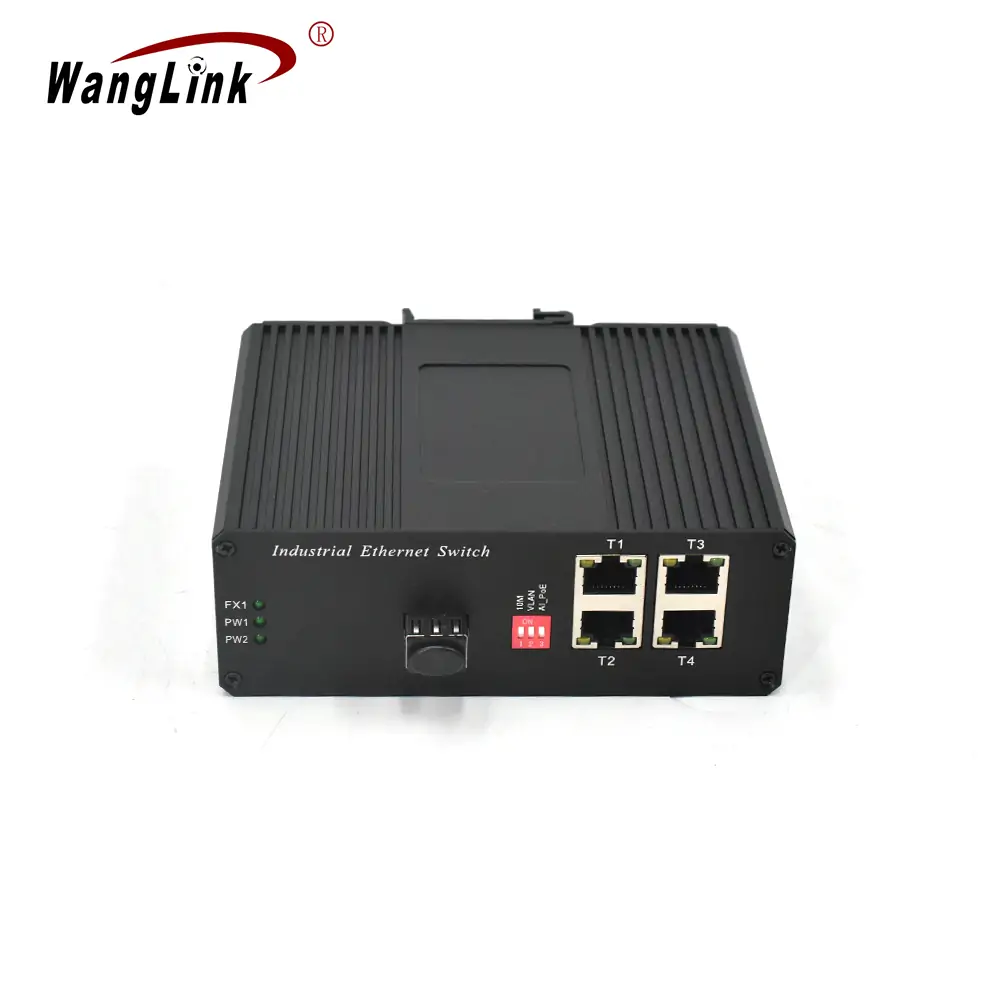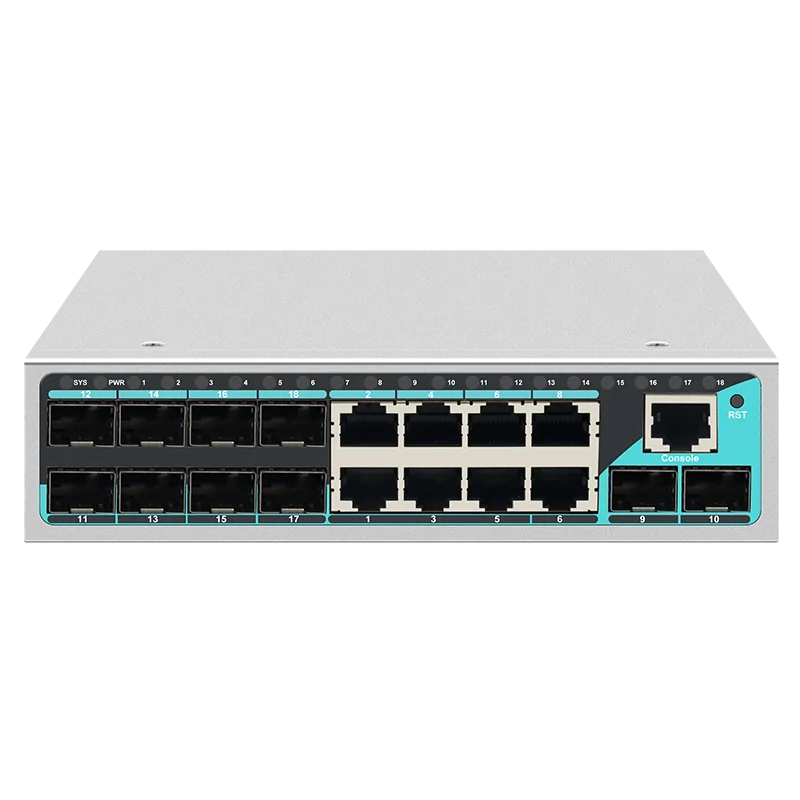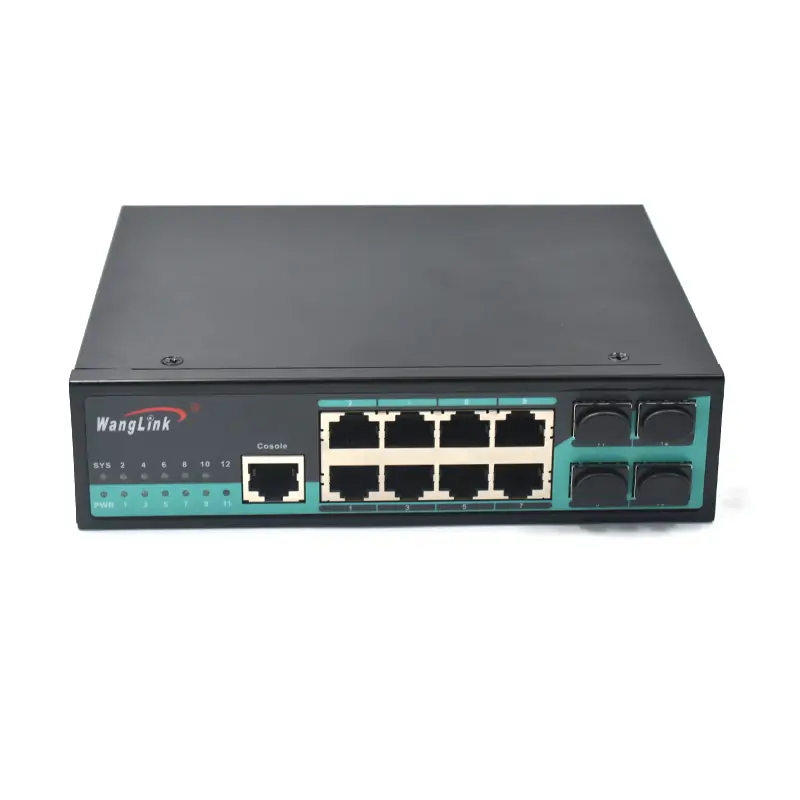The Complete Guide to Gigabit Ethernet Switches: Performance, Selection, and Implementation
In today’s fast-paced digital landscape, network infrastructure forms the backbone of every successful business operation. Among the critical components that ensure seamless connectivity, gigabit ethernet switches stand out as game-changing devices that deliver exceptional performance and reliability. As businesses increasingly rely on high-bandwidth applications, cloud services, and real-time data processing, the demand for robust networking solutions has never been higher.
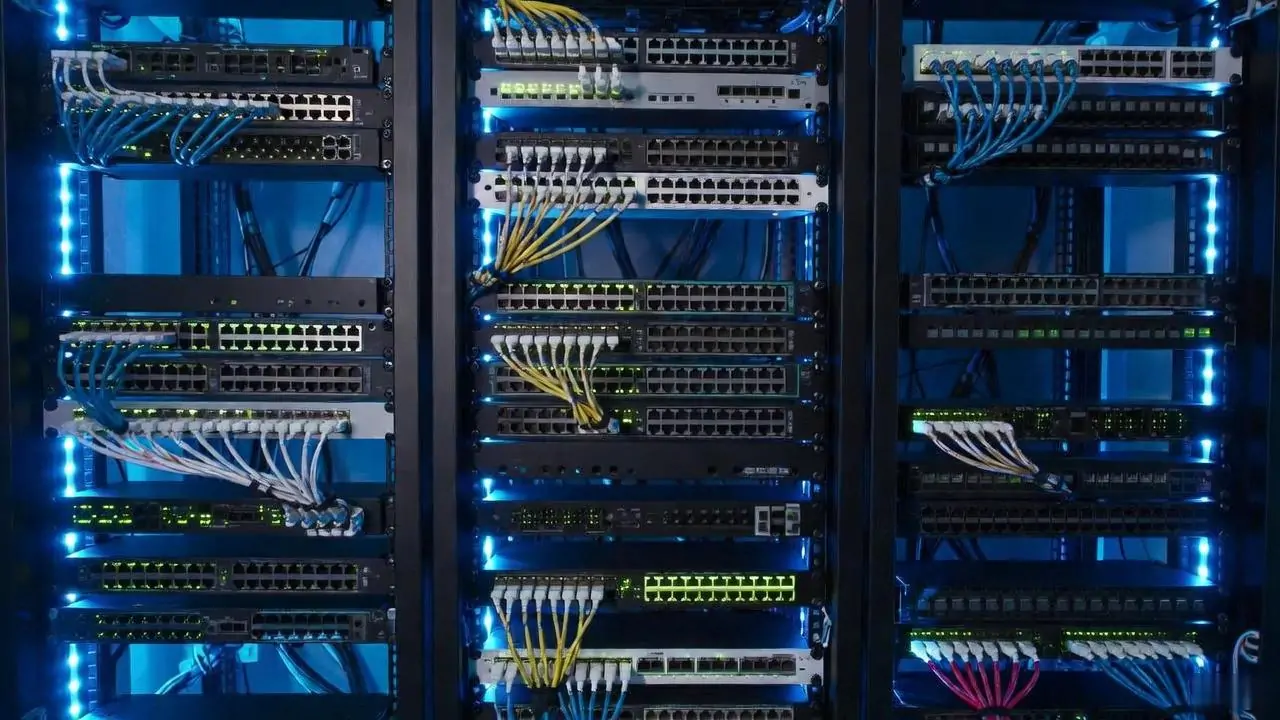
Understanding Gigabit Ethernet Switch Technology
What is a Gigabit Ethernet Switch?
A gigabit ethernet switch is a network device that operates at Layer 2 of the OSI model, providing high-speed data transmission at 1000 Mbps (1 Gbps) per port. Unlike traditional fast ethernet switches that operate at 100 Mbps, gigabit switches offer ten times the bandwidth capacity, making them ideal for modern network demands.
Key Technical Specifications
When evaluating gigabit ethernet switches, several technical parameters determine their performance and suitability for specific applications:
| Specification | Description | Typical Range |
|---|---|---|
| Port Count | Number of available ethernet ports | 5-48 ports |
| Switching Capacity | Maximum data throughput | 10-176 Gbps |
| MAC Address Table | Number of MAC addresses stored | 8K-32K entries |
| Buffer Memory | Packet buffering capacity | 1.5-12 MB |
| Power Consumption | Energy usage per device | 8-150 watts |
| MTBF | Mean Time Between Failures | 200,000+ hours |
Advanced Features and Capabilities
Modern gigabit switches incorporate sophisticated features that enhance network performance and management:
- Auto-negotiation: Automatically detects and configures optimal connection speeds
- Flow control: Prevents packet loss during high-traffic periods
- VLAN support: Enables network segmentation for improved security
- QoS prioritization: Ensures critical traffic receives priority handling
- Link aggregation: Combines multiple ports for increased bandwidth
Types of Gigabit Ethernet Switches
Unmanaged Gigabit Switches
Unmanaged switches offer plug-and-play functionality without configuration requirements. These devices are perfect for small offices and home networks where simplicity is paramount.
Popular Models from Wanglink:
- SG05S Unmanaged Five Port Gigabit Ethernet Switch
- SG08T-V2 Unmanaged 8 Port Gigabit Ethernet Switch
- SG16 16 Port Gigabit Ethernet Switch
Managed Gigabit Switches
Managed switches provide advanced configuration options, monitoring capabilities, and security features. These switches are essential for enterprise environments requiring precise network control.
PoE Gigabit Switches
Power over Ethernet (PoE) gigabit switches deliver both data and power through a single cable, simplifying installations for IP cameras, wireless access points, and VoIP phones.
Featured PoE Solutions:
- SG411P-E Unmanaged 4 Port PoE Gigabit Ethernet Switch
- SG82P Unmanaged 8 Port Gigabit Ethernet Switch PoE

Industrial Gigabit Switches
Industrial-grade switches are designed for harsh environments, featuring extended temperature ranges, vibration resistance, and ruggedized enclosures.
Industrial Solutions:
- ISG101-2005 Unmanaged Industrial Gigabit Ethernet Switch
- ISL802P Industrial Fast Ethernet Din Rail Switch PoE
Selection Criteria for Gigabit Ethernet Switches
Network Size and Port Requirements
Determining the appropriate port count is crucial for network planning:
- Small Networks (5-8 ports): Ideal for home offices and small businesses
- Medium Networks (16-24 ports): Suitable for growing businesses and departments
- Large Networks (24+ ports): Required for enterprise environments and data centers
Performance Requirements
Consider these performance factors when selecting a gigabit switch:
- Bandwidth requirements: Calculate total bandwidth needs based on connected devices
- Latency sensitivity: Critical for real-time applications like video conferencing
- Throughput capacity: Ensure the switch can handle peak traffic loads
- Buffer size: Important for networks with bursty traffic patterns
Environmental Considerations
Different environments require specific switch characteristics:
| Environment Type | Key Requirements | Recommended Features |
|---|---|---|
| Office | Standard temperature, low noise | Desktop/rack mount, energy efficient |
| Industrial | Extended temperature, vibration resistance | DIN rail mount, IP-rated enclosure |
| Outdoor | Weather protection, wide temperature range | Weatherproof housing, surge protection |
| Data Center | High density, redundancy | Rack mount, hot-swappable components |
Real-World Implementation Case Studies
Case Study 1: Small Business Network Upgrade
Background: A 25-employee marketing agency needed to upgrade their 100 Mbps network to support video editing and cloud-based collaboration tools.
Challenge: The existing fast ethernet infrastructure couldn’t handle multiple 4K video streams and large file transfers simultaneously.
Solution: Implementation of the SG2401 Unmanaged 24 Port Gigabit Ethernet Switch as the core switch, connected to smaller 8-port switches for workgroup connectivity.
Results:
- 90% reduction in file transfer times
- Eliminated network bottlenecks during peak usage
- Improved productivity for video editing teams
- Future-proofed infrastructure for growth
Case Study 2: Manufacturing Facility Network
Background: A automotive parts manufacturer required a robust network for their production line monitoring and quality control systems.
Challenge: The harsh industrial environment with temperature fluctuations, vibrations, and electromagnetic interference demanded specialized networking equipment.
Solution: Deployment of industrial gigabit switches with DIN rail mounting and extended temperature ratings throughout the facility.
Results:
- 99.9% network uptime achieved
- Real-time monitoring of 200+ production sensors
- Reduced maintenance costs due to ruggedized design
- Seamless integration with existing industrial protocols
Case Study 3: Educational Institution Deployment
Background: A university campus needed to upgrade dormitory networks to support increasing student device connectivity and bandwidth demands.
Challenge: Budget constraints required a cost-effective solution that could handle high device density and provide reliable performance.
Solution: Strategic deployment of PoE gigabit switches to power wireless access points while providing high-speed connectivity to wired devices.
Results:
- Support for 50+ devices per floor
- Simplified cable management with PoE technology
- 40% reduction in installation costs
- Enhanced student satisfaction with network performance

Installation and Configuration Best Practices
Physical Installation Guidelines
Proper installation ensures optimal performance and longevity:
- Rack Mounting: Use appropriate rack rails and ensure adequate ventilation
- Cable Management: Organize cables to prevent interference and facilitate maintenance
- Power Considerations: Verify power requirements and use appropriate outlets
- Environmental Monitoring: Install in climate-controlled environments when possible
Network Design Principles
Effective network design incorporates these principles:
- Hierarchical Design: Implement core, distribution, and access layers
- Redundancy: Provide backup paths for critical connections
- Scalability: Plan for future growth and expansion
- Security: Implement appropriate access controls and monitoring
Configuration Best Practices
For managed switches, follow these configuration guidelines:
- VLAN Configuration: Segment traffic for security and performance
- QoS Settings: Prioritize critical applications and traffic types
- Port Security: Limit MAC addresses per port to prevent unauthorized access
- Monitoring Setup: Configure SNMP and logging for network visibility
Troubleshooting Common Issues
Performance Problems
Common performance issues and solutions:
- Slow Transfer Speeds: Check cable quality, port configuration, and duplex settings
- Intermittent Connectivity: Verify cable connections and switch port status
- High Latency: Analyze network topology and consider traffic prioritization
Hardware Issues
Identifying and resolving hardware problems:
- Port Failures: Test with known good cables and devices
- Power Problems: Verify power supply specifications and connections
- Overheating: Check ventilation and ambient temperature
Configuration Errors
Avoiding common configuration mistakes:
- VLAN Mismatches: Ensure consistent VLAN configuration across switches
- Spanning Tree Issues: Properly configure STP to prevent loops
- Port Speed Mismatches: Verify auto-negotiation settings
Future Trends and Considerations
Technology Evolution
The networking industry continues to evolve with emerging technologies:
- Multi-Gigabit Ethernet: 2.5G and 5G speeds for high-performance applications
- Software-Defined Networking: Centralized network management and control
- Edge Computing: Distributed processing requiring robust local networks
- IoT Integration: Supporting massive device connectivity
Sustainability Initiatives
Modern switches incorporate energy-efficient features:
- Energy Efficient Ethernet (EEE): Reduces power consumption during low traffic periods
- Smart Power Management: Automatically adjusts power based on cable length
- Green Certifications: Compliance with environmental standards
Why Choose Wanglink for Your Gigabit Ethernet Switch Needs
As a leading ethernet switch manufacturer with over 13 years of experience, Wanglink offers comprehensive solutions for all networking requirements. Our commitment to quality and innovation has made us a trusted partner for businesses worldwide.
Competitive Advantages
- Extensive Product Portfolio: Over 3,000 different models serving various industries
- Custom Solutions: One-stop OEM and ODM services from PCBA design to packaging
- Quality Assurance: Rigorous testing and quality control processes
- Global Support: Professional sales team and technical support
- Inventory Management: $30 million in stock for rapid delivery
Product Quality and Reliability
Our gigabit ethernet switches undergo comprehensive testing to ensure:
- Compliance with international standards (IEEE 802.3, FCC, CE)
- Extended temperature range operation
- High MTBF ratings for long-term reliability
- Comprehensive warranty coverage
Frequently Asked Questions
What is the difference between a gigabit switch and a fast ethernet switch?
A gigabit ethernet switch operates at 1000 Mbps (1 Gbps), which is ten times faster than a fast ethernet switch that operates at 100 Mbps. This increased speed allows for faster file transfers, better support for high-bandwidth applications, and improved overall network performance.
Can I mix gigabit and fast ethernet devices on the same network?
Yes, gigabit switches are backward compatible with fast ethernet devices. The switch will automatically negotiate the connection speed, allowing 100 Mbps devices to connect alongside 1000 Mbps devices. However, the slower devices will operate at their maximum speed of 100 Mbps.
How many devices can I connect to a gigabit switch?
The number of devices depends on the switch’s port count. Each port can connect one device directly, or you can connect additional switches to expand the network. For example, a 24-port switch can directly connect 24 devices, but you can connect additional switches to support hundreds or thousands of devices.
What cables do I need for gigabit ethernet connections?
For gigabit ethernet, you need at least Cat5e cables, though Cat6 or Cat6a cables are recommended for better performance and future-proofing. The maximum cable length for gigabit ethernet is 100 meters (328 feet) for copper cables.
Do I need a managed or unmanaged gigabit switch?
The choice depends on your network requirements:
- Unmanaged switches are ideal for simple networks where plug-and-play functionality is sufficient
- Managed switches are necessary for networks requiring VLANs, QoS, security features, or advanced monitoring capabilities
How much power does a PoE gigabit switch consume?
Power consumption varies based on the number of ports and PoE requirements. A typical 8-port PoE gigabit switch consumes 60-120 watts, while larger 24-port switches may consume 200-400 watts. Check the specific power budget for each model to ensure adequate power supply.
What is the lifespan of a gigabit ethernet switch?
Quality gigabit switches typically have a Mean Time Between Failures (MTBF) of 200,000+ hours, which translates to approximately 20+ years of continuous operation under normal conditions. Proper installation, adequate ventilation, and regular maintenance can extend this lifespan.
Can gigabit switches handle 10 Gigabit connections?
Standard gigabit switches operate at 1 Gbps per port. However, many modern gigabit switches include SFP+ uplink ports that support 10 Gigabit connections for backbone connectivity. Some switches also offer multi-gigabit ports supporting 2.5G and 5G speeds.
For more information about our gigabit ethernet switch solutions or to discuss your specific networking requirements, please contact us at [email protected] or WhatsApp: +8613544167258. Visit our products page to explore our complete range of networking solutions, or check our news and knowledge base for the latest industry insights and technical information.
